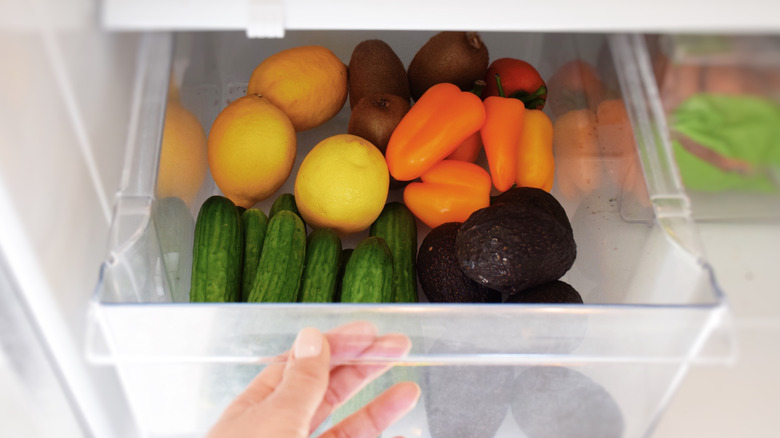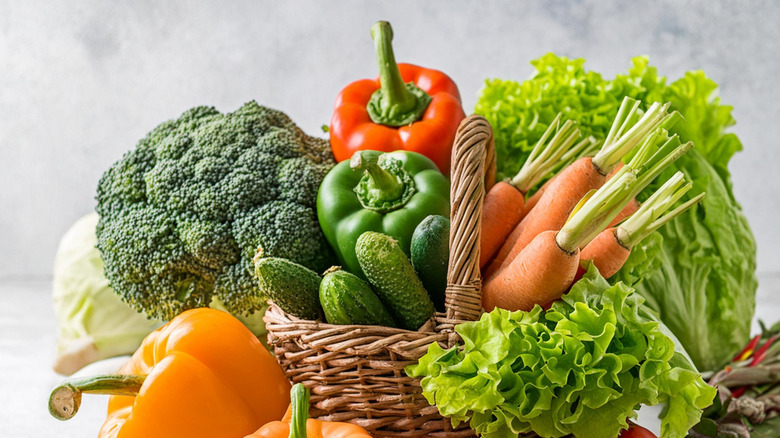You're Probably Using The Crisper Drawer In Your Fridge Wrong
The kitchen and all of the food it helps store are full of mysteries. What happens if you inadvertently eat the sticker on an apple? Why does bread go stale so fast? And why do fruits and vegetables need their own drawer in the fridge? We may not have the answers to all your kitchen questions, but we can tell you that crisper drawers actually do have a function: to keep your produce from spoiling too fast. But before you start throwing everything in there and calling it a day, you should be aware that there is a science behind the magic. Knowing what to put in these useful drawers will save you from the guilt of throwing food away. Not knowing can actually result in produce going bad even faster.
A great invention of modernity, crisper drawers work by manipulating moisture. Most of the space in a fridge is open, which allows for the moisture to be sucked out by the fridge's fan. This is great for most types of foods, but produce normally needs moisture to keep, well, crisp. No one wants limp lettuce or dry strawberries. These drawers basically hold the humidity of fruits and vegetables, helping them to stay fresher for longer. But not all fruit is created equal, since some produce more ethylene, a gas that ripens them. When produce ripens and produces this gas, it also signals to other foods around that it's time to start to ripen.
How to correctly use the fridge's crisper drawer
To really take advantage of your crisp drawer's full potential, you need to know which foods thrive in high humidity environments, which prefer low humidity, and which produce larger amounts of ethylene. Bananas and apples, for instance, are two fruits know to produce a lot of the gas, hence why they always seem to ripen at the same time. When you put these two fruits together, especially in a humid environment like a drawer, it can cause them to spoil faster and lose their desired texture.
Likewise, it wouldn't make sense to put berries (which like moisture), and tomatoes or lemons (which prefer dryness) in the same drawer. Doing this would make it so one group will ripen too fast. But play your cards right, and you could unlock the secret to having produce that ripens exactly when you need it to. If you have two drawers, use them wisely by storing produce that thrives in high humidity in one, and produce that thrives in low humidity in the other. Some fridges come with a vent that can be slid open to control moisture levels. And if you have a single-crisper drawer, use it for the high humidity groups. As a rule of thumb, thicker skin produce (like tomatoes, lemons, and onions) shouldn't have too much moisture. In fact, you could keep these foods out of the fridge altogether.

